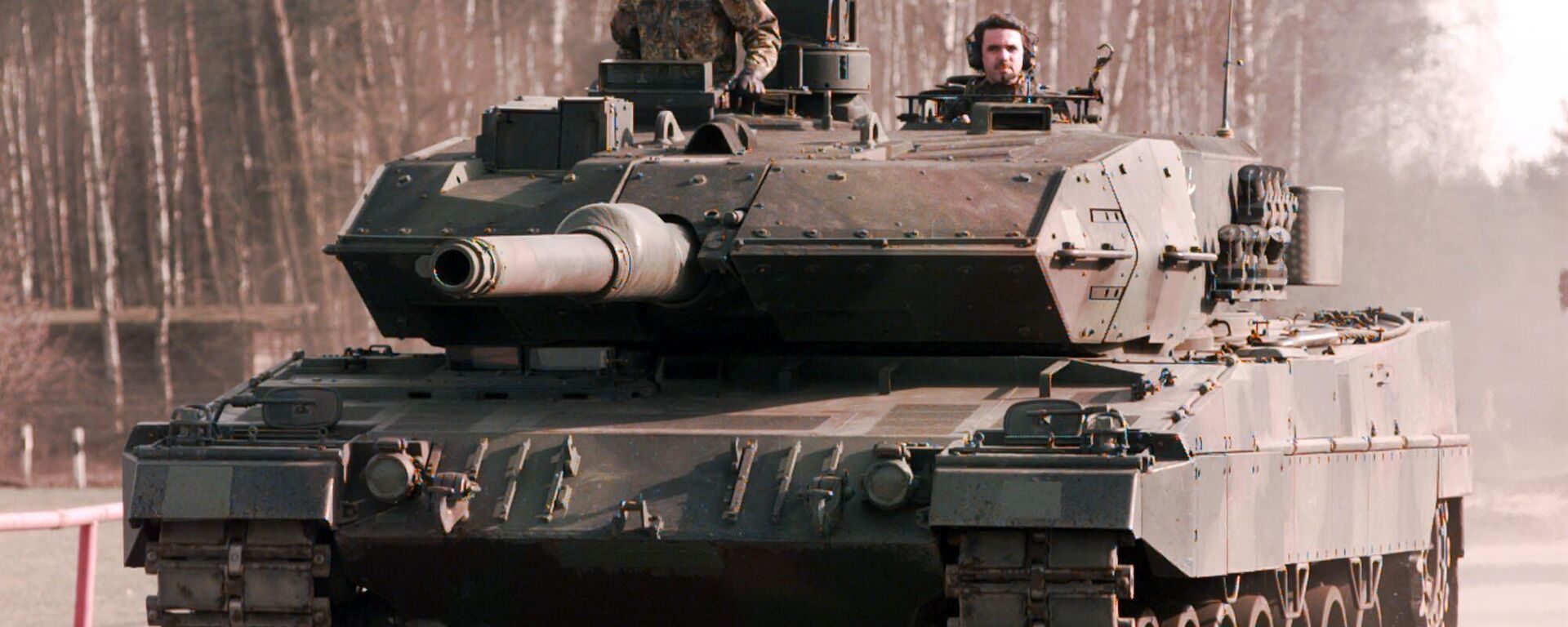https://sputnikglobe.com/20230622/watch-russian-lancet-drone-destroys-ukrainian-tank-1111407236.html
Watch Russian Lancet Drone Destroy Ukrainian Tank
Watch Russian Lancet Drone Destroy Ukrainian Tank
Sputnik International
Russia’s distinctive dual x-wing drones began to be regularly spotted on the battlefield in Ukraine in the spring, destroying NATO artillery, rocket launchers and anti-aircraft systems, and moving on to take on tanks and armored vehicles after Kiev launched its long-awaited counteroffensive in early June.
2023-06-22T19:09+0000
2023-06-22T19:09+0000
2023-06-22T19:18+0000
russia's special operation in ukraine
russia
ukraine
volodymyr zelensky
lancet
russian defense ministry
nato
drone
footage
https://cdn1.img.sputnikglobe.com/img/07e7/06/16/1111405759_0:2:493:279_1920x0_80_0_0_5f8a4d83f329d0b83a8801b55eeb5565.jpg
The Russian Defense Ministry has published footage of a Russian Lancet kamikaze drone striking a Ukrainian T-64M Bulat tank in Donetsk region.The footage shows the tank being monitored as it stands at the crossroads of a local dirt road, with a Lancet striking its aft armor, exploding and kicking up a cloud of dust. Flames can be seen shooting out of the tank, indicating that its armor had been penetrated and its ammunition detonated. The fire grows, and eventually, the tank explodes in a fireball, pieces of its armor flying in all directions.Ukraine’s tank crews have suffered heavy losses amid Kiev’s faltering attempts at a counteroffensive. This week, German media revealed that Ukrainian tankers fighting in Zaporozhye region were deliberately feigning breakdowns to avoid fighting Russian forces and being blown up by Russian artillery and drones.The stalled counteroffensive weakened after Kiev sent its domestically built and Leopard 1 and 2 main battle tanks head on against well-prepared Russian defensive positions without air and artillery superiority. President Volodymyr Zelensky admitted this week that progress has been slower than expected.Russia’s Lancet loitering munitions have featured heavily in recent news reports on the NATO-Russia proxy war in Ukraine. The drones have a maximum flight range between 40 and 70 km, a one-hour endurance time, and a payload between 3-5 kg. In addition to attacking ground targets, Lancets can target aerial threats, including heavy enemy drones.
https://sputnikglobe.com/20230621/ukrainian-tank-crews-feign-breakdowns-to-avoid-combat-1111358862.html
russia
ukraine
Sputnik International
feedback@sputniknews.com
+74956456601
MIA „Rossiya Segodnya“
2023
News
en_EN
Sputnik International
feedback@sputniknews.com
+74956456601
MIA „Rossiya Segodnya“
The Russian Ministry of Defense has released a video showing a Russian Lancet drone strike a Ukrainian Bulat tank in the South Donetsk direction.
Sputnik International
The Russian Ministry of Defense has released a video showing a Russian Lancet drone strike a Ukrainian Bulat tank in the South Donetsk direction.
2023-06-22T19:09+0000
true
PT0M57S
Sputnik International
feedback@sputniknews.com
+74956456601
MIA „Rossiya Segodnya“
tank, lancet, ukraine, russia, footage, video, russian military, armor
tank, lancet, ukraine, russia, footage, video, russian military, armor
Watch Russian Lancet Drone Destroy Ukrainian Tank
19:09 GMT 22.06.2023 (Updated: 19:18 GMT 22.06.2023) Russia’s distinctive dual x-wing drones began to be regularly spotted on the battlefield in Ukraine this spring, destroying NATO artillery, rocket launchers and anti-aircraft systems, and moving on to take on tanks and armored vehicles after Kiev launched its long-awaited counteroffensive in early June.
The Russian Defense Ministry has published footage of a Russian Lancet kamikaze drone striking a Ukrainian T-64M Bulat tank in Donetsk region.
The footage shows the tank being monitored as it stands at the crossroads of a local dirt road, with a Lancet striking its aft armor, exploding and kicking up a cloud of dust. Flames can be seen shooting out of the tank, indicating that its armor had been penetrated and its ammunition detonated. The fire grows, and eventually, the tank explodes in a fireball, pieces of its armor flying in all directions.
Ukraine’s tank crews have suffered heavy losses amid Kiev’s faltering attempts at a counteroffensive. This week, German media
revealed that Ukrainian tankers fighting in Zaporozhye region were deliberately feigning breakdowns to avoid fighting Russian forces and being blown up by Russian artillery and drones.
The stalled counteroffensive weakened after Kiev sent its domestically built and Leopard 1 and 2 main battle tanks head on against well-prepared Russian defensive positions without air and artillery superiority. President Volodymyr Zelensky admitted this week that progress has been slower than expected.
Russia’s Lancet loitering munitions have featured heavily in recent news reports on the NATO-Russia proxy war in Ukraine. The drones
have a maximum flight range between 40 and 70 km, a one-hour endurance time, and a payload between 3-5 kg. In addition to attacking ground targets, Lancets can target aerial threats, including heavy enemy drones.


